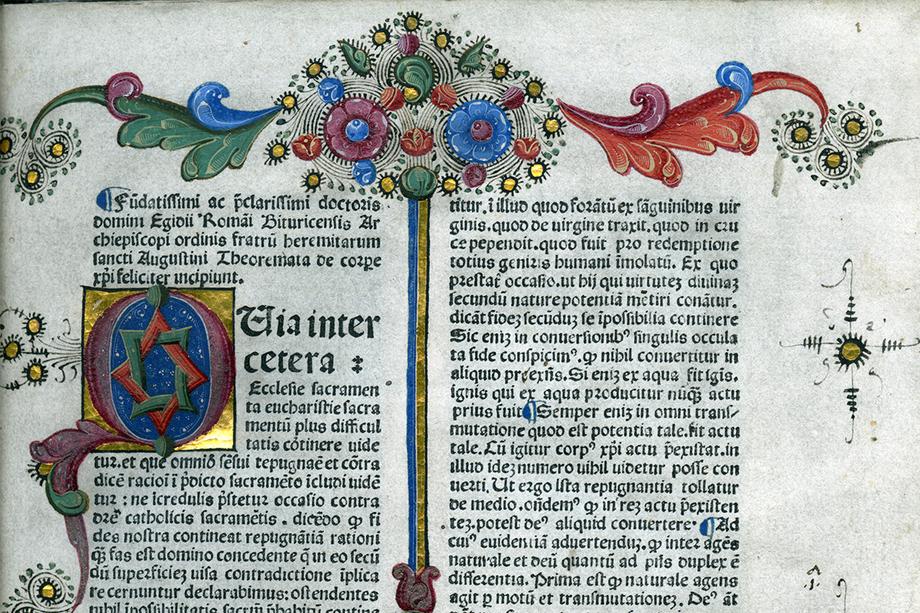Early Printed Books
Our collection of early printed books showcases the origin and evolution of movable-type printing in Western Europe, tracing its development from its inception in the mid-1450s to the early 19th century. Comprising approximately 460 incunables (from the Latin incunabulum, plural incunabula), our collection encompasses books produced between 1454 — when Johann Gutenberg printed the Bible in Mainz — and 1501.
Notable items within our holdings include a single leaf from Gutenberg’s 42-line Bible, along with works by influential printers and type designers from the hand-press era. Among these are Nicolas Jenson, Aldus Manutius, Erhard Ratdolt, the Estienne family, John Baskerville, and Giambattista Bodoni. Additionally, we have more than 1700 volumes of imprints from the Elzevier Press, renowned for producing elegant editions of the classics in small, affordable volumes.
In response to the growing interest in studying book history, we prioritize the acquisition of early printed books that contain annotations from previous readers and retain their original bindings. Furthermore, we actively seek to expand our collection to include books illustrated with woodcuts and copperplate engravings.
The collection of early printed books is housed in the Special Collections Research Center.
Important related collections
We also collect early printed books in established areas of topical strength, such as the History of Astronomy and Mathematics and History of Medicine

